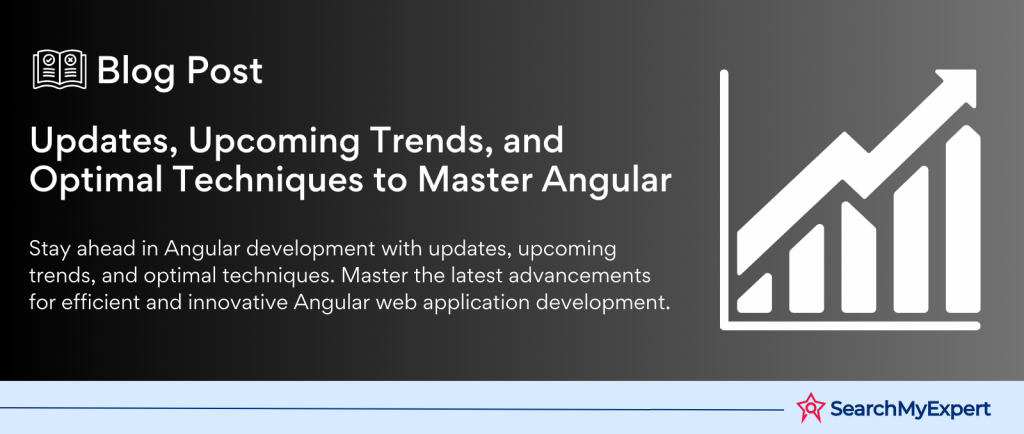Transitioning from AngularJS: Strategies and Alternatives
In the rapidly evolving landscape of web development, technologies and frameworks come and go, leaving developers and organizations to adapt to new tools and paradigms to maintain efficiency and competitiveness. AngularJS, once a cornerstone for building dynamic web applications, has reached its end-of-life. As we move through 2024, the need to transition from AngularJS to modern frameworks has become increasingly critical. This comprehensive guide will explore effective strategies for transitioning, the challenges involved, and the best alternatives to AngularJS, ensuring your web applications remain robust, secure, and scalable.
Understanding the Transition
The End-of-Life of AngularJS
AngularJS, developed by Google in 2010, revolutionized the way developers build web applications by introducing the concept of two-way data binding, among other features. However, with the introduction of Angular (also known as Angular 2+) in 2016, AngularJS was set on a path to obsolescence. Google officially ended long-term support for AngularJS on December 31, 2021, meaning no further updates, security patches, or bug fixes. This end-of-life (EOL) status necessitates a transition for maintaining application security, performance, and future growth.
Challenges in Transitioning
Transitioning from AngularJS involves several challenges:
- Codebase Rewrite:
Moving to a new framework often requires rewriting significant portions of the application. - Learning Curve:
Teams must upskill or adapt to the paradigms of a new framework. - Dependency Management: Dependencies in the AngularJS application may not be compatible with newer frameworks.
Strategic Approaches to Transition
Incremental Upgrade vs. Complete Rewrite
There are two primary approaches to transitioning from AngularJS:
- Incremental Upgrade: Utilizing tools like ngUpgrade, applications can be upgraded component by component, allowing for a smoother transition.
- Complete Rewrite:
This approach involves rewriting the entire application in a new framework, which can be more time-consuming but offers a clean break from legacy code.
Selecting a Target Framework
When choosing a new framework, consider:
- Angular: A natural progression from AngularJS, offering similar concepts and an easier learning curve for AngularJS developers.
- React:
Popular for its simplicity and flexibility, React is a good choice for projects prioritizing a component-based architecture. - Vue.js: Known for its ease of integration and incrementally adoptable ecosystem, making it suitable for gradually transitioning projects.
Best Practices for a Smooth Transition
- Skill Development:
Invest in training for your development team to ease the transition. - Code Modularization:
Break down the application into smaller, manageable modules. - Automated Testing:
Implement comprehensive automated tests to ensure functionality remains consistent.
Understanding Angular Versioning
Angular adopts a semantic versioning system, a widely accepted standard for versioning software in a way that makes it easy to understand the impact of each new release on existing code. This approach to versioning is crucial for developers and organizations to manage dependencies, plan updates, and maintain the stability and security of their applications over time. Understanding Angular’s versioning system helps developers navigate updates efficiently, ensuring applications leverage the latest features without introducing unexpected issues.
Semantic Versioning Explained
Semantic versioning, or SemVer, is a versioning scheme that uses a three-part number format, MAJOR.MINOR.PATCH, to convey the scope and nature of changes made in each release:
- MAJOR version when you make incompatible API changes,
- MINOR version when you add functionality in a backward-compatible manner, and
- PATCH version when you make backward-compatible bug fixes.
This structure provides clear insights into the potential impact of updating to a newer version of the software.
Angular’s Adoption of SemVer
Angular’s commitment to semantic versioning means that developers can update their applications with confidence, understanding exactly what each new version brings. Here’s how Angular applies the SemVer principles:
Major Versions
Major releases of Angular introduce significant changes that may not be backward-compatible. These can include rewrites of core functionality, removal of deprecated features, or changes that require developers to modify their applications. Angular’s major versions are scheduled every six months, with each release receiving long-term support (LTS) for a defined period, ensuring stability for enterprise applications.
Minor Versions
Minor releases add new features and improvements to Angular that are backward-compatible. These versions provide new capabilities or enhancements that do not require changes to existing application code. Minor updates are typically more frequent than major ones, offering developers access to new tools and functionalities without the need for extensive modifications.
Patch Versions
Patch releases are focused on bug fixes, performance improvements, and security patches that do not affect the API or add new features. These updates are fully backward-compatible and ensure that Angular applications remain secure, efficient, and stable. Patch versions are released as needed, sometimes multiple times between minor or major releases, to address urgent issues.
Staying Informed about Angular Updates
Keeping up with the latest updates and trends in Angular is vital for developers to ensure their applications leverage the full power and efficiency of the Angular platform. With Angular’s active development and regular release cycle, staying informed about new versions, features, and best practices is crucial. Fortunately, there are several official resources and vibrant community forums where developers can find valuable information, updates, and discussions related to Angular.
Official Resources for Angular Updates
The Angular Blog
The Angular Blog is an indispensable resource for any Angular developer. Managed by the Angular team at Google, it provides official announcements, detailed explanations of new features, insights into future plans, and best practices for development with Angular. Following the Angular Blog is a straightforward way to receive authoritative information directly from the source.
Update Alerts
Angular offers tools and documentation to help developers update their applications to the latest versions seamlessly. The Angular Update Guide (https://update.angular.io/) is a tailored tool that provides step-by-step instructions for updating Angular applications, based on the current and target versions you specify. It includes recommendations for prerequisite actions, package updates, and post-update testing to ensure a smooth transition.
Community Forums and Discussions
Beyond official resources, the Angular community is an excellent source of support, insights, and trends. Community forums, discussion groups, and social media platforms are where developers share experiences, ask questions, and offer solutions. Engaging with the Angular community can provide practical advice, innovative approaches, and early warnings about potential issues.
GitHub and Stack Overflow
- GitHub: The Angular GitHub repository not only hosts the Angular source code but also serves as a platform for reporting issues, contributing to the codebase, and discussing future improvements. Following discussions here can offer insights into the development priorities and challenges faced by the Angular team and community.
- Stack Overflow: With its extensive network of developers, Stack Overflow is a treasure trove of answers to specific Angular questions, from troubleshooting errors to implementing advanced features.
Social Media and Online Forums
Platforms like Reddit, LinkedIn, and Twitter are vibrant spaces for Angular developers. Subreddits like r/Angular2 and LinkedIn groups focused on Angular provide forums for news, tutorials, and networking with other developers. Following hashtags like #Angular or #AngularUpdate on Twitter can also keep you informed about the latest discussions and resources.
Upgrading Your Angular Project
Upgrading an Angular project to the latest version is a crucial step in ensuring the application benefits from the latest security patches, performance improvements, and new features. Angular provides a streamlined process for updating projects through the Angular Command Line Interface (CLI), specifically with the ng update command. This command automates much of the upgrade process, but it’s essential to understand the steps involved, potential challenges, and strategies to mitigate these challenges.
The Upgrade Process Using Angular CLI
Preparation
Before initiating the upgrade, ensure your application is in a good state. This involves:
- Running tests to confirm your current application is bug-free.
- Committing or stashing your changes to ensure a clean working directory.
Updating the Angular CLI
First, update the global Angular CLI to the latest version using npm:
Bash
npm install -g @angular/cli
Then, update the local project version of the Angular CLI:
bashng update @angular/cli @angular/core
This command updates both the global CLI and the core framework packages to their latest versions.
Running ng update
Use the ng update command to update the core framework packages and other dependencies:
Bash
ng updat
The CLI will analyze your project, identify necessary updates, and may prompt you for actions. For major upgrades, specifying the packages to update, such as @angular/cli @angular/core, can help control the update process.
Updating Additional Dependencies
After updating Angular itself, you may need to update other dependencies:
Bash
ng update <package-name>
Replace <package-name> with each dependency that requires an update, based on the CLI’s recommendations or your project’s needs.
Testing and Validation
After the updates, thoroughly test your application to ensure all functionalities work as expected. This includes running unit tests, end-to-end tests, and manual testing of critical application paths.
Potential Challenges and Mitigation Strategies
Compatibility Issues
- Challenge:
Dependencies or third-party libraries may not be compatible with the latest Angular version. - Mitigation: Before updating, check the compatibility of critical dependencies. Consider waiting for these dependencies to be updated or looking for alternatives if necessary.
Breaking Changes
- Challenge:
Major Angular versions can introduce breaking changes that might affect your application. - Mitigation:
Review the Angular update guide and changelog for breaking changes. Adjust your code accordingly before proceeding with the update.
Testing Failures
- Challenge: After an update, existing tests might fail due to changes in Angular’s behavior or APIs.
- Mitigation:
Update your testing strategies, mocks, and setups according to the latest Angular version’s requirements. Utilize the Angular testing documentation for guidance.
Custom Tooling and Configuration Issues
- Challenge:
Custom build configurations or tooling might not work with the new Angular version. - Mitigation: Update custom tooling and configurations based on the new Angular version’s requirements. Seek community advice or consult Angular’s documentation for configuration changes..
Exploring the Future of Angular
The future of Angular is shaping up to be exciting, with the Angular team continuously working on new features, improvements, and adaptations to keep pace with the evolving landscape of web development. By staying committed to providing a robust, scalable, and easy-to-use framework, Angular ensures its place at the forefront of modern web application development. This section highlights some of the upcoming features and roadmap highlights of Angular, as well as discussing the evolving trends in web development and how Angular is adapting to these changes.
Upcoming Features and Roadmap Highlights
Improved Developer Ergonomics
The Angular team is focusing on improving developer ergonomics, making it easier and more intuitive to build applications with Angular. This includes simplifying common tasks, enhancing the CLI’s capabilities, and streamlining the development process to reduce boilerplate and increase productivity.
Strict Typing for Forms
To enhance maintainability and scalability, Angular is working towards strict typing for reactive forms. This feature will provide developers with better tooling support, early detection of potential issues, and improved code quality by leveraging TypeScript’s type system more effectively.
Faster Compilation and Runtime Performance
Performance remains a key focus area, with ongoing efforts to reduce compilation times and improve runtime performance. This includes optimizations in the Ivy compiler and renderer, incremental builds, and more efficient change detection mechanisms to ensure Angular applications remain fast and responsive.
Enhanced Internationalization (i18n) and Localization
Recognizing the global nature of web applications, Angular is enhancing its internationalization and localization support. Future updates will bring more powerful and flexible tools for translating applications and managing locale-specific content, making it easier for developers to reach a global audience.
Evolving Trends and Angular’s Adaptation
Web Components and Micro Frontends
As the trend towards modular and decoupled architectures grows, Angular is adapting by improving its compatibility with web components and micro frontend approaches. This allows Angular applications to be more modular, easier to maintain, and capable of integrating with other frameworks and technologies in a microservice-oriented architecture.
Server-Side Rendering (SSR) and Static Site Generation (SSG)
With the importance of SEO and performance, Angular continues to invest in technologies like Angular Universal for server-side rendering and exploring options for static site generation. These technologies help improve the initial load time and SEO of Angular applications, making them more competitive in the fast-paced digital marketplace.
Enhanced State Management
State management is a crucial aspect of complex application development. Angular is focusing on providing more guidance and tools for effective state management, supporting existing libraries, and potentially introducing new patterns and solutions to simplify state management in large-scale applications.
Sustainability and Eco-Friendly Development
Acknowledging the growing concern for digital sustainability, Angular is exploring ways to make web applications more eco-friendly. This includes optimizing resource usage, reducing the carbon footprint of applications, and encouraging best practices for sustainable web development.
The Importance of Staying Updated with Angular
Staying updated with Angular is more than a technical necessity; it’s a strategic advantage in the competitive landscape of web development. Regular updates ensure that applications are secure, efficient, and aligned with the latest web standards and user expectations. By embracing Angular’s updates, developers and organizations can leverage the framework’s full potential for building scalable, maintainable, and high-performing web applications. This commitment to security and innovation not only enhances the development process but also ensures a superior user experience.
Security and Innovation
Security patches and performance improvements are critical aspects of Angular’s regular updates, protecting applications against emerging threats and ensuring they run smoothly across various platforms and devices. Additionally, new features and enhancements enable developers to adopt the latest web development trends, such as modular architecture, server-side rendering, and improved state management, keeping applications at the cutting edge of technology.
Resources for Further Learning and Engagement
To maximize the benefits of Angular and stay ahead in the rapidly evolving world of web development, here are some resources for further learning and engagement:
- Angular Documentation:
The official Angular documentation https://angular.io/docs is a comprehensive resource covering everything from getting started with Angular to advanced concepts and best practices. - Angular Blog:
The Angular Blog https://blog.angular.io/ offers insights, updates, and announcements directly from the Angular team, providing valuable information on the framework’s future direction. - Angular University: For in-depth tutorials and courses, Angular University
provides a wealth of learning materials to enhance your Angular skills. - Community Forums and Social Media: Engaging with the Angular community through platforms like GitHub, Stack Overflow, Reddit, and Twitter allows developers to share knowledge, discuss challenges, and stay informed about the latest Angular trends and best practices.
- Conferences and Meetups: Participating in Angular conferences and local meetups is an excellent way to connect with other Angular professionals, learn from industry experts, and explore innovative uses of Angular in real-world projects.
Conclusion
In the dynamic realm of web development, Angular stands out as a beacon of innovation, security, and efficiency. By staying abreast of Angular’s updates, developers harness the power of modern web standards, ensuring their applications are not only secure but also aligned with the latest technological advancements. This guide has journeyed through the essentials of Angular’s versioning system, the significance of regular updates, and the vibrant ecosystem surrounding Angular. With resources like the Angular documentation, the Angular blog, and community forums at your disposal, the path to mastering Angular is filled with opportunities for growth and engagement. Whether you’re refining existing applications or embarking on new projects, Angular offers the tools, community, and forward-thinking philosophy needed to build web applications that are truly next-generation. Engaging with Angular’s updates and innovations is not just a development strategy—it’s a commitment to excellence in the web development community.
Experience the power of Angular with our Angular JS Development Service Company.
Table of Contents
Toggle






